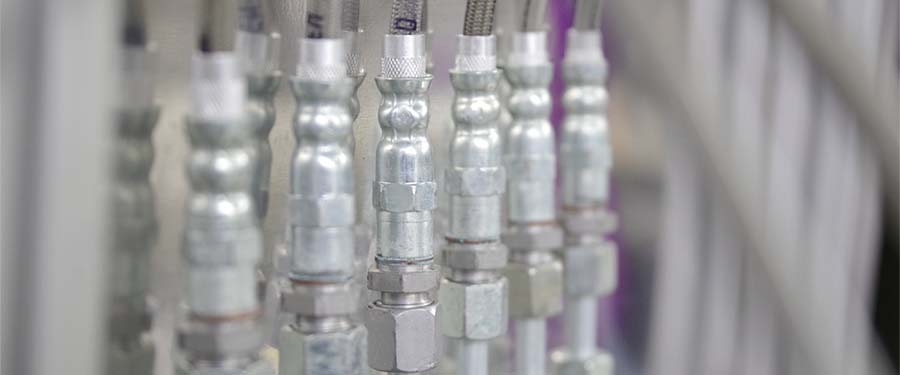This is how we make the hydraulic circuit of the ABS unit like new again during the remanufacture process
The center of an ABS unit consists of a pump motor, a hydraulic manifold and an electronic control unit (ECU). From this central system, the brake fluid is distributed via pipes to the brake cylinders in each wheel. Each of these components has an important function in this and is carefully examined in our remanufacture process. That is why we recently put a brand new machine into use that supports us in remanufacturing the hydraulic distribution unit. We are happy to explain how this works!
The Hydraulic Control Unit (HCU): how does it actually work?
In a conventional ABS system, the hydraulic manifold is the first component through which the brake fluid flows after it leaves the master cylinder. This block contains solenoid valves that can temporarily block the flow of brake fluid to the brake pedal. The part is therefore also called a 'hydraulic control unit' (HCU). Each wheel brake cylinder has its own intake valve and exhaust valve. When the ABS system is de-energized, the intake valve is always open and the exhaust valve is always closed. Both valves are actuated simultaneously when the brake pressure must be interrupted. The fluid can then drain from the brake cylinders. As soon as this control is lost again, the inlet valve opens again and the exhaust valve closes again.
After reading the above story it becomes clear that brake fluid has an important role in the HCU. If not maintained, this important fluid can have a negative effect on the functioning of the ABS system. This is because of the fact that brake fluid is hygroscopic. Simply explained, this means that brake fluid attracts moisture. The more moisture that mixes with the brake fluid over time, the worse the quality becomes due to the clouding. In extreme cases, this can itself lead to corrosion in the ABS unit, with the hydraulic control unit being one of the biggest victims of this. Defects due to a corroded HCU are therefore not uncommon. This is also one of the reasons why it is recommended to replace the brake fluid periodically (e.g. once a year).

Flushing brake fluid in ABS unit
That said, it is not surprising that in many cases the brake fluid is replaced after the ABS has been repaired. But isn't this brake fluid immediately contaminated by 'old' brake fluid that is still in the ABS system? Not at ACtronics! Thanks to the flush machine that has an important place in our ABS remanufacturing process, this is a thing of the past. The hydraulic part of the ABS unit is completely flushed under a certain pressure for a few minutes. This means that any residue of old and contaminating fluid is completely removed from the ABS unit. In addition, this process can also dislodge incipient deposits from the system and flush them out of the unit. By combining this with the high-tech remanufacturing techniques of the other machines that are part of our remanufacturing process, we know for sure that we can bring the part back to full OEM quality!

 da
da de
de es
es fr
fr it
it nb
nb nl
nl pt
pt sv
sv fi
fi